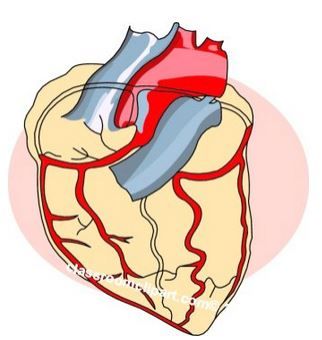- Clinical Technology
- Adult Immunization
- Hepatology
- Pediatric Immunization
- Screening
- Psychiatry
- Allergy
- Women's Health
- Cardiology
- Pediatrics
- Dermatology
- Endocrinology
- Pain Management
- Gastroenterology
- Infectious Disease
- Obesity Medicine
- Rheumatology
- Nephrology
- Neurology
- Pulmonology
GLP-1RAs Good for Diabetes, Good for the Heart
Glucagon-like peptide-1 receptor agonists represent a novel class of antihyperglycemic agents that have a cardiac-friendly profile.
Macrovascular complications are leading cause of death in type 2 DM.

The risk of cardiovascular disease (CVD) is several times higher in patients with type 2 diabetes mellitus (DM) than in nondiabetic controls, and patients with DM are considered for CVD secondary prevention because their risk level is similar to that in patients without DM who have had a myocardial infarction, according to the authors of a review article that appeared recently in Cardiovascular Diabetology.
Glucagon-like peptide-1 receptor (GLP-1R) agonists, a class of drugs for patients with type 2 DM, have consistently demonstrated beneficial effects on CVD in these patients, the authors stated. GLP-1R agonists represent a novel class of antihyperglycemic agents that have a cardiac-friendly profile. They also preserve neuronal cells and inhibit neuronal degeneration; have an anti-inflammatory effect on the liver, protecting it against steatosis; increase insulin sensitivity; promote weight loss; and increase satiety or anorexia.
GLP-1R agonists “improve the health and survival of Ã-cells (improvement in postprandial hyperglycemia), suppress glucagon (improvement in fasting hyperglycemia), improve insulin resistance (modest effect) and influence energy intake (augment satiety signal) with minimal, if any, side effects (weight neutral and non-hypoglycemic),” the authors said. “The incretins address most of the proposed pathophysiologic mechanisms involved in the development of T2D.”
In their review, the authors discussed recent evidence of the potential clinical benefit of the incretin effect on the CV system and the underlying biological mechanisms.
GLP-1R Activation in the Heart
The cardiometabolic effects of GLP-1 are attenuated in obesity and type 2 DM, the authors noted. “GLP-1-mediated control of heart rate and blood pressure is complex,” they added.
Animal studies suggest that incretins may have a protective effect on cardiomyocite viability. In humans, infusion of GLP-1 for 72 hours in patients with left ventricular dysfunction after myocardial infarction improved left ventricular wall motion scores and so shortened hospital stays and inpatient mortality.
Intravenous infusion of GLP-1 for 48 hours in healthy humans increased muscle sympathetic nerve activity, but it had no effect on blood pressure, norepinephrine plasma concentration, or the sympathetic/parasympathetic balance as estimated by heart rate variability, the authors stated. This suggests that “the increase in sympathetic drive is at least partially compensated by an increase in the parasympathetic activity,” they said. However, acute subcutaneous injection of GLP-1 increases heart rate and blood pressure transiently in healthy humans, returning to normal ranges 50 to 60 minutes after injection.
Other benefits of incretins observed in the CV system include an increase in endogenous antioxidant defenses, inhibition of cardiomyocite apoptosis, and attenuation of endothelial inflammation and dysfunction.
GLP-1R Activation and Artery Wall Function
GLP-1 protects the cardiac microvessels against oxidative stress, apoptosis, and the resultant microvascular barrier dysfunction in DM, contributing to improvement of cardiac function and cardiac glucose metabolism.
Although it has been demonstrated only in animal and cell models, GLP-1 impacts the development and/or the progression of atherosclerotic plaques.
Infusion of GLP-1 in obese patients was associated with renoprotective effects including significantly increased excretion of sodium (by 60%), calcium (by 60%), and chloride (by 44%) and a significantly decreased excretion of H+ (by 75%).
Effects on Cardiovascular Events
Evidence is now emerging on the potential clinical benefit of GLP-1R agonists and points to a decrease in major adverse CV and cerebrovascular events, including stroke, myocardial infarction, cardiac mortality, acute coronary syndrome, and revascularization procedures. A study in patients with and without diabetes presenting with class II/IV heart failure, GLP-1 infusion improved left ventricular ejection fraction, myocardial ventilation oxygen consumption, and 6-minute walk distance.
“GLP-1R agonists already in the market and others in development present the same mode of action and, having the same pleiotropic effects of native GLP-1, and the differences in clinical profiles between them are related to differences in pharmacokinetics, structure and size of each formulation,” the authors stated. “The most remarkable clinically important pharmacokinetic characteristic is the difference between the short-acting and continuous-acting compounds.”
Differences Between Agents
The authors suggested that because GLP-1R agonists all have the same mode of action and the same pleiotropic effects of native GLP-1, their differences in clinical profiles are related to differences in pharmacokinetics, structure, and size of each formulation. The most clinically important pharmacokinetic characteristic, they said, is the difference between short-acting and continuous-acting compounds.
The CV benefits of this new therapeutic approach to glycemic control in patients with type 2 DM may lessen the CV burden related to this disease in both developed and developing countries around the world, the authors concluded.
References:
Saraiva FK, Sposito AC. Cardiovascular effects of glucagon-like peptide 1 (GLP-1) receptor agonists. Cardiovasc Diabetol. 2014;13:142 doi:10.1186/s12933-014-0142-7
